Steel_Wind
Legend
 PATHFINDER REVIEW: Jade Regent Adventure Path Vol. 1: The Brinewall Legacy by James Jacobs
PATHFINDER REVIEW: Jade Regent Adventure Path Vol. 1: The Brinewall Legacy by James Jacobs Title: Jade Regent Vol. 1: The Brinewall Legacy
Author: James Jacobs
Price: Print Edition $19.99 PDF Edition $13.99 PAIZO
Author’s Note: This article continues my review of the Jade Regent Adventure Path. The first instalment, which provided an overview of Jade Regent as well as an examination of the new rules governing Caravans and Romances may be found here.
Spoiler Policy: It is impossible to meaningfully review an Adventure Path, even from a height of 30,000 feet, without giving away the lay of the land and the overall direction of the AP. Consequently, minor spoilers of a general nature are contained within this review and there is no attempt to mask those spoilers with any obscuring of text. Additionally, a significant and highly specific spoiler may be found and the end of the article which is obscured by the spoiler tag. However, as those spoiler tags do not transpose to HTML, readers of this review who receive it via e-mail as part of the ENWorld newsletter must take special care to note the *spoiler* warning at the end of the article.
What Has Gone Before: The First Adventure Path Sequel
Other than in the special case exception which governs the Pathfinder Society campaign, Paizo has been immensely careful concerning the development of its Golarion world setting to refuse to “require” or otherwise mandate that any particular Adventure Path or other event depicted in a published adventure or novel has already taken place. In Golarion, it is essentially always 4707 A.R., by default, and no adventure path is ever assumed to have already run its course. By default, none of these events, some of which are potentially world shaking, have yet to occur.
Until now, that is.
The Jade Regent Adventure Path is the first true sequel published by Paizo, in the sense that the events as depicted in the Rise of the Runelords Adventure Path (and to a lesser extent, the events in Second Darkness, for that matter) are presume to have already occurred. The events that took place in Sandpoint during the Rise of the Runelords are presumed to have already happened a few years previously. In the Golarion of the Jade Regent, it’s not 4707 – it is instead ca. 4710.
Paizo is acutely aware of the problems that continuity issues can create in developing a setting as massive as Golarion has become over the past four years. It is for this reason that this is the first true sequel that Paizo has yet published (with the possible exception of the much maligned Second Darkness). Given the fact that Paizo publishes nearly 2,400+ pages of adventure and setting material in a given year, it is a potential minefield where overlapping treatments of locales and characters could lead to making significant continuity errors or other gaffes. For the present, the approach taken in Jade Regent is sensible given the set-up of the two (of three) NPCs that can participate in the AP from previous AP instalments.
 One other matter concerning continuity deserves special mention in connection with Jade Regent as it also assumes that one other stand alone adventure has also recently taken place. The Licktoad Goblin Tribe, which appears in the free 16-page adventure We Be Goblins, (produced and released for Free RPG Day earlier this year), provides the backstory for Act I of The Brinewall Legacy. If your players have already played We Be Goblins, you should not consider that a liability; rather, it is one of the strengths of The Brinewall Legacy.
One other matter concerning continuity deserves special mention in connection with Jade Regent as it also assumes that one other stand alone adventure has also recently taken place. The Licktoad Goblin Tribe, which appears in the free 16-page adventure We Be Goblins, (produced and released for Free RPG Day earlier this year), provides the backstory for Act I of The Brinewall Legacy. If your players have already played We Be Goblins, you should not consider that a liability; rather, it is one of the strengths of The Brinewall Legacy.Act I: “You’re All in a Bar...”
The Brinewall Legacy begins without any PC (or NPC) aware of the important role Ameiko’s Kaijitsu’s family once played in Minkai. Instead, the PCs are in Ameiko’s tavern, the Rusty Dragon in Sandpoint and the problems of the day are far less grandiose -- and far more immediate. A tribe of goblins in the nearby Brinestump Marsh have grown uncommonly bold, probably because they appear to have located a cache of fireworks.
The PCs, assumed to be locals from Sandpoint, are called upon to investigate the nearby Marsh in order to “defuse” the goblin threat.
For those GMs and players familiar with We Be Goblins, the spin on the plot hooks presented in that adventure from the Humans’ point of view in nearby Sandpoint is particularly clever -- if not outright charming. While the shipwreck presented in We Be Goblins is presumed to have burnt down by the time the PCs investigate it, a GM can quickly rework the backstory of We Be Goblins if the GM wants to include more of that tale into The Brinewall Legacy. It is quite easy to make significant use of some of the events and locales presented in We Be Goblins in order to supplement the PCs adventures in the Brinestump Marsh and their investigations of the Licktoad Goblins.
In many respects, Act I of the first volume of Jade Regent is highly reminiscent of Stolen Land or Rivers Run Red from the Kingmaker Adventure Path. The approach taken with the Brinestump Marsh is decidedly sandboxy in the first Act and encounters are for the most part presented as vignettes. The foes are met via a simple location based premise keyed to one-off encounters in the wild, or in discrete areas with very few rooms/areas to investigate. I found this part of the tale worked brilliantly. In particular, players and GMs who have played We Be Goblins previously will be extremely pleased with this aspect of Vol. 1 of Jade Regent.
 The highlight (though not the climax) of the adventures through the Brinestump Marsh is the fairly detailed and well developed camp of the Licktoad Goblins rules by Chief Gutwad. Still, there is a lot more to see and do in the Brinestump Marsh and a GM has a wide ambit to customize the encounter areas to his or her party’s needs, too. Jacobs plainly has a great love for his goblins. Together with the new artwork that Wayne Reynolds developed back in Pathfinder #1, those goblins have become the mascots of the entire Pathfinder brand. If anything, the goblins presented in Jade Regent Vol. 1 are an improvement upon those presented in Burnt Offerings.
The highlight (though not the climax) of the adventures through the Brinestump Marsh is the fairly detailed and well developed camp of the Licktoad Goblins rules by Chief Gutwad. Still, there is a lot more to see and do in the Brinestump Marsh and a GM has a wide ambit to customize the encounter areas to his or her party’s needs, too. Jacobs plainly has a great love for his goblins. Together with the new artwork that Wayne Reynolds developed back in Pathfinder #1, those goblins have become the mascots of the entire Pathfinder brand. If anything, the goblins presented in Jade Regent Vol. 1 are an improvement upon those presented in Burnt Offerings.Act I ends with a discovery which will cause Ameiko and the PCs to charter a caravan to head north to the ruined fortress of Brinewall.
Act II: On the Road
The Second Act of Jade Regent as presented in the module is relatively short, unless the GM wishes to lengthen it (and many will). Essentially, as a result of the climax of Act I, the Heroes and Ameiko will hire a caravan to travel north to the ruined fortress of Brinewall in order to investigate it. This part of the adventure will be primarily an opportunity to role-play, set the stage for the Romances between the party members and core recurring NPCs, and to engage in some old-fashioned random encounters in the wild as the discretion of the GM permits. The details provided are few for this aspect of the adventure and the emphasis is upon individual GMs to fill in those details of the trek north (or not) as the GM may prefer.
Careful GMs will pay attention to the XP point level of their parties and be careful to supplement that XP level only as required. Generally, a party will be at second level at this stage of game, and their caravan will automatically gain a second level when the PCs join it.
Act III: The Ruins of Brinewall Fortress
The longest part of The Brinewall Legacy and its final act takes place within the ruined fortress of Brinewall and its environs. Here, any specific details will ruin the adventure and such details necessarily go beyond the purview of this review. The only specifics I will provide are noted in the spoiler text at the end of the review.
That said, in terms of generalities, there were three aspects of this part of the adventure that were particular standouts.
Firstly, it is abundantly clear that James Jacobs has taken a great deal of time and effort to design a fortress inhabited by bad guys in a manner so as to make the place feel alive and to make sense as an organic whole. Back-in-the-day, in the so-called “classic era” of dungeon design, rooms were filled with monsters not because they made sense, but because they were convenient foes. No thought was given to what they ate, where they spent their days when awake -- and nights as they slept -- where they went to the bathroom (or even if they did), or how they communicated with others in the dungeon complex when under attack. A so-called “classic dungeon” either ignored everything that bordered on such realism/verisimilitude either because of “fun,” or perhaps just as often, out of ignorance that such things even mattered.
 They certainly mattered to me. They mattered a lot back then and matter even more to me now. I prefer a setting where my Fantasy RPGs take place that feels real within the physical/magical premise of the setting, inhabited with living, breathing foes with motives, goals -- and lives – all their own.
They certainly mattered to me. They mattered a lot back then and matter even more to me now. I prefer a setting where my Fantasy RPGs take place that feels real within the physical/magical premise of the setting, inhabited with living, breathing foes with motives, goals -- and lives – all their own. James Jacobs obviously prefers a similar setting. I cannot remember another instance of a setting within a Paizo Adventure Path that seems so alive. I cannot recall another instance of where the various foes present in the area had their presence explained so well and elaborately and where the relationship of each foe to the putative BBEG was so carefully explained and justified. Brinewall feels real and makes complete sense within the context of the setting. A GM who takes the time to read (and re-read) Act III can get a coherent picture of what the foes and denizens of Brinewall will do to coordinate their defences depending on when and where the PCs choose to invade it. What is abundantly clear is that the foes will not just sit back, like so many Orcs in their hermitically sealed rooms, waiting patiently for the PCs to kick down their doors, kill them, and take their pies. Brinewall may be a fun place to adventure in, but it is not a silly place.
Secondly, I found the maps to be excellent and well inspired. Drawn by consummate cartographer Jared Blando, the maps for Brinewall are extremely well done. Here, I think the major kudos go not to Blando (whose map art remains up to his usual excellent standards) but to the turnover by Jacobs as map designer. The fortress makes use of interesting angles for the orientation of the main keep which, however obvious the approach may be, is one not often taken by adventure authors. Consequently, the keep feels interesting to look at while still being sensibly laid out. Especially when used with the new Interactive Maps that now come with subscriber’s copies of the Jade Regent Adventure Path, subscribers to Paizo’s Pathfinder Adventure Path line will be able to make the most out of the excellent layouts when running their adventures.
Thirdly, the interior character illustrations of the BBEG and one of his cleric followers are simply top-notch. Sadly, I am not able to share these new monster illustrations with you in this review, as it would simply spoil the module to a degree that that would anger many readers (they appear on pages 38 and 41). Suffice to say that this NPC/monster art is significantly above the very good illustration quality typically present in Paizo’s flagship line. Indeed, the artwork was more memorable than the names of the characters it was depicting. C’est la vie.
Cha-Cha-Cha-Changes
A few other changes are worth mentioning to the Jade Regent Adventure Path in terms of its general layout and composition. For one, Jade Regent no longer includes stat blocks for the iconic characters that are “assumed” to be adventuring within the AP. This break from past form was well appreciated when it began in the Carrion Crown Adventure Path and the Jade Regent continues to omit these character stat blocks from the pages of the AP.
A new inclusion to the Jade Regent AP layout is a two-page spread on “Jade Regent Treasures,” featuring custom magical items of note within the pages of the AP. I liked this new addition to the AP line and it made these items especially easy to identify and note.
Another approach with the Jade Regent AP which may seem new to some readers is that Paizo omits stat blocks from within the AP of creatures that appear in both the Bestiary 1 as well as the Bestiary 2. While this has been a longstanding practice with creatures presented in the Bestiary 1, that has not been the case with Bestiary 2 creatures until more recently. In making this decision, Paizo has made it clear that all of its hardcover books are essentially “core” books that the GM is presumed to have. The same approach is used with respect to classes and spells which appear in the APG as well as Ultimate Magic and Ultimate Combat.
 I am greatly in favour of this approach and I commend Paizo for doing this. While running the Age of Worms Adventure Path several years ago, it became abundantly clear that foes that used only the 3.5 core rules for abilities were quickly outmatched by players using 3.5 expansion material. The only way to fix this problem was to rewrite the stat blocks – defeating much of the utility of purchasing an AP in the first place. The result was an AP where the power creep inherent within 3.5 was outright breaking the published adventures and making them obsolete before they were even published.
I am greatly in favour of this approach and I commend Paizo for doing this. While running the Age of Worms Adventure Path several years ago, it became abundantly clear that foes that used only the 3.5 core rules for abilities were quickly outmatched by players using 3.5 expansion material. The only way to fix this problem was to rewrite the stat blocks – defeating much of the utility of purchasing an AP in the first place. The result was an AP where the power creep inherent within 3.5 was outright breaking the published adventures and making them obsolete before they were even published. Unlike WotC, Paizo’s core business model was founded upon selling adventures to subscribers every month. Not surprisingly, Paizo wants to ensure that they do not make their own adventure products obsolete with every new rules expansion to Pathfinder. By making such new rules “default” rules in their adventure products, they will ensure that their adventures are not rendered obsolete through the players’ use of expansion material. Moreover, players and GMs also benefit with adventures that seem much more “fresh” and up-to-date.
While some may object to this decision, those objections are misplaced. Paizo has concurrently made the risky business decision to deflect any substantial criticism from this approach to their adventure products by updating the Pathfinder Reference Document to include all of the class and spell material in the Advanced Player’s Guide, Ultimate Magic, and Ultimate Combat – and to provide it free of charge to players and GMs. They have also done the same with all of the monsters in the Bestiary 2 and, I expect, will at some point next year, do the same with the monsters in the Bestiary 3. Accordingly, there is no reason whatsoever for this material not to be externally referenced from within an Adventure Path and no good reason to complain when Paizo does so.
The Jade Regent AP devotes all the space saved in the AP from repeating stat blocks to instead provide new monsters and to include additional new adventure material. Those are win-win design and business decisions, in my view.
The Downside of Jade Regent Vol. 1: The Brinewall Legacy
There were some aspects to the modules I found a little disappointing or off-putting.
One complaint I have with The Brinewall Legacy is probably unavoidable (to a degree) given that the entire premise of the Jade Regent Adventure Path is to be an Eastern flavoured module series. I appreciate that this is the very point of this Adventure Path. Conceptually, I am open to the premise. To the extent that I may have any misgivings, the Shogun/fish-out-of-water approach to the AP that I examined in my overview of the series is a complete answer to any residual concerns I might have had. I went into reading The Brinewall Legacy with an open mind and high expectations, especially given that I was aware of just how much James Jacobs was excited by the AP and how highly motivated he was to bring his “A” game to the table. For the most part, he absolutely nails it, too.
The problem after reading the module is that I had an astonishingly hard time remembering many of the names of all these characters and monster types, even after reading it twice, cover to cover. Without putting too fine a point on it, it felt a little like a Phil Collins tune had snuck into the module, with the refrain of Tsu Tsu Pseud(i)o flying off the page more often that I found palatable. Between all the nu’s, gu’s and tsu’s, the naming regime utilized a slurry of faux Japanese. I found it distracting and sometimes difficult to follow, too. My guess is that it will interfere with some GMs trying to prep the adventure.
The counter to this complaint is that an Eastern flavoured module needs to be exactly that: Eastern flavoured. I also appreciate that if the author is going to take the time to create verisimilitude with dynamic henchmen in the Brinewall ruins, it also makes sense to preserve the same verisimilitude when it comes to a naming regime for Eastern monsters and non-player characters.
To be fair, I am not sure what the proper balance should be, nor am I convinced that a naming regime utilizing a faux Japanese is the wrong approach. It may be that a great number of fans will enjoy it. My complaint is not whether it was the correct flavour choice; rather, in practical terms, I found it hard to follow. Moreover, aesthetically, the faux Japanese did seem strained at times. YMMV.
 There is a paucity of detail on Act II. I would have preferred this part of the adventure to have received more attention. Act II receives only one page of text in the main adventure. To be fair, there are a number of caravan encounters that are shifted to page 81 of the Bestiary, so that adds a second page. Still, I would have liked to have seen some potential role-playing options and character interaction presented in this Act. Yes – there was space. (The module features four pages of ads at the end – which is two pages too many, imo). I would have preferred to have seen two of those ad pages devoted to potential character development plot threads with the four “core NPCs” along the road in Act II.
There is a paucity of detail on Act II. I would have preferred this part of the adventure to have received more attention. Act II receives only one page of text in the main adventure. To be fair, there are a number of caravan encounters that are shifted to page 81 of the Bestiary, so that adds a second page. Still, I would have liked to have seen some potential role-playing options and character interaction presented in this Act. Yes – there was space. (The module features four pages of ads at the end – which is two pages too many, imo). I would have preferred to have seen two of those ad pages devoted to potential character development plot threads with the four “core NPCs” along the road in Act II.To be fair, some fans have expressed concern about the “core NPCs” potentially overshadowing the PCs in the tale. In my view, this fear is certainly misplaced based upon the module text so far in Jade Regent. Indeed, if anything, Ameiko, Shelalu, Koya, and Sandru are under-utilized in the module as presented. I would have preferred to see more potential backstory and interaction possibilities presented in the module and to leave whether or not that character interaction occurs up to the players and the GM. As it stands, apart from the NPC profiles and the plot-device interaction with Ameiko, the “Core NPCs” provide an unrealized potential in The Brinewall Legacy. I feel this was a missed opportunity.
One other specific complaint that I have is confined to the *SPOILERS* section at the end of the article.
The Brinewall Legacy: The Final Verdict
Overall, I thought the module presents an excellent adventure, combining aspects and plot threads dangling from previous Paizo products in a masterful way. Acts I and III of the module present entertaining encounters that draw the players into the tale, challenge them, and make sense.
Of all of the Adventure Paths Paizo has released to date, this one seems to be the most story oriented Adventure Path yet. For many fans of Pathfinder Adventure Path, an ongoing story unfolding over an entire campaign is the major draw and Jacobs delivers. Even so, Jacobs recognizes that every GM will have his or her own preferred approach; therefore, hooks are deliberately inserted for the GM to graft his or her own creations into the story seamlessly.
Interestingly, the main treasure hoard at the end of the module is left almost entirely open for the GM to specify the reward for the party according to their own unique needs and abilities within the specified gold piece limit. I thought this was a nice touch.
The monsters presented in Act III of The Brinewall Legacy, in particular, are thematically consistent, well tied together and rationally explained within the context of the module. There are also options for role-play and obtaining allies from within the ruined fortress complex. One of the major knocks on larger dungeon crawls can be the unremitting combat the dungeon presents, such that opportunities for role-play can be lost and the game can devolve into a tabletop combat game for unacceptably long stretches of time. Jacobs is mindful of this weakness in larger dungeons and designs to mitigate those effects. Moreover, like every good story, not all is what it seems at Brinewall, so the players are kept on their toes.
If there is a weakness to the module, or better stated, a potential drawback for some customers, it is that the adventure the module presents is clearly part of a larger tale with a story tightly interweaving this segment of the adventure to the rest of the AP. While that is not a drawback to an Adventure Path per se, it is a warning to those GMs who prefer to purchase opening volumes of an AP for use as campaign starters of their own. Given the tight story motivations that emerge in The Brinewall Legacy, the module as presented will take a bit more work to use as a campaign starter than a less tightly integrated module such as The Haunting of Harrowstone.
One bonus to tighter story integration is that the modules themselves are more fun to read. Paizo is well aware that their adventures must not only play well – they must read well, too. Not all of their customers will play their modules, but most of them will read it. In that regard, Jacobs’ ability to write an engaging adventure is second to none and The Brinewall Legacy is a highly entertaining module when simply read as “gaming fiction” or as psychic fuel to inspire some other adventure. At least, it would be if the “nu’s, gu’s and tsu’s” dial was turned down from “eight” to a more comfortable “five.”

**SPOILERS** **SPOILERS****SPOILERS****SPOILERS****SPOILERS**
Mouseover the blacked-out text below to reveal hidden spoilers.
In encounter area U12 within the Brinewall fortress, the party comes across an undead form of a small child with a skeletal wolf’s head. It is, in fact, an Attic Whisperer from Bestiary 2. The PCs will likely kill this foe without much further thought to it. Thereafter, the PCs might locate a charcoal drawing upon a wall that depicts the sack of Brinewall as recorded by the child as the horror of the invasion unfolded. The encounter over and the clue obtained, the PCs move on. The End.
At least, that the PCs perspective on things; however, what the GM reads is something else entirely.
The GM reads the backstory to the death of this child and it is quite depressing, as backstories in a module go. I truly commend James Jacobs on his ability to convey actual pathos and tragedy in the manner of this child’s death with fewer words to do it than I will employ below. It is not often that a backstory in a module will tug on my flinty heartstrings, but Jacobs manages it here just the same.
It turns out that the child, named Tolo, hid from attackers during the sack of Brinewall within this storage area after witnessing his parents cut down. Crying to himself, all alone and trying to hide, Tolo tries to steady his resolve. For some reason, Tolo records what happened as a drawing upon the wall using charcoal. (One wonders if he put the sun in the corner of the picture). Minutes later, in an attempt to climb up on a pile of wood to hide within the storage/closet area better, the child slips and the pile of wood collapses on Tolo, burying him in firewood and upsetting the brazier he was using for a light source. So the child burns to death, screaming under this pile of firewood, as he hears his family and friends being slaughtered around him beyond the closet door and unable to help him. That is the essence of the backstory of Tolo’s death. I have a six-year old son and I found it to be quite disturbing in the imagery the story invoked.
From this heartbreaking tale, without further ado, in the next paragraph the author quickly switches the child into undead form with a wolf’s head (the Attic Whisperer) that sobs to himself and plays with broken bits of wood, rubble, and charred bits of his own bones as his “toys” within this closet for decades. The present denizens of Brinewall are understandably creeped out by the sounds of this sobbing child and stay well clear of this storage area.
Tolo is set up to attack the party when they enter the storage room. The party can flee or the party can kill Tolo. Those are the only options in the module as presented. The PCs will kill Tolo, almost every time and that will be that.
I know this is the way Attic Whisperers are “supposed” to work, but with a backstory like this, isn’t it possible for the undead child to be redeemed or more gently laid to rest somehow by the PCs? The author takes such great care to set up the horror of Tolo’s death and to explain his creation and have it make sense (like everything else in the fortress). However, after this amazingly depressing backstory – the dead boy gets an undead wolf’s head and the encounter just unfolds as yet-another-undead-beastie to slay. Huh?
No and HELL no
At least, that the PCs perspective on things; however, what the GM reads is something else entirely.
The GM reads the backstory to the death of this child and it is quite depressing, as backstories in a module go. I truly commend James Jacobs on his ability to convey actual pathos and tragedy in the manner of this child’s death with fewer words to do it than I will employ below. It is not often that a backstory in a module will tug on my flinty heartstrings, but Jacobs manages it here just the same.
It turns out that the child, named Tolo, hid from attackers during the sack of Brinewall within this storage area after witnessing his parents cut down. Crying to himself, all alone and trying to hide, Tolo tries to steady his resolve. For some reason, Tolo records what happened as a drawing upon the wall using charcoal. (One wonders if he put the sun in the corner of the picture). Minutes later, in an attempt to climb up on a pile of wood to hide within the storage/closet area better, the child slips and the pile of wood collapses on Tolo, burying him in firewood and upsetting the brazier he was using for a light source. So the child burns to death, screaming under this pile of firewood, as he hears his family and friends being slaughtered around him beyond the closet door and unable to help him. That is the essence of the backstory of Tolo’s death. I have a six-year old son and I found it to be quite disturbing in the imagery the story invoked.
From this heartbreaking tale, without further ado, in the next paragraph the author quickly switches the child into undead form with a wolf’s head (the Attic Whisperer) that sobs to himself and plays with broken bits of wood, rubble, and charred bits of his own bones as his “toys” within this closet for decades. The present denizens of Brinewall are understandably creeped out by the sounds of this sobbing child and stay well clear of this storage area.
Tolo is set up to attack the party when they enter the storage room. The party can flee or the party can kill Tolo. Those are the only options in the module as presented. The PCs will kill Tolo, almost every time and that will be that.
I know this is the way Attic Whisperers are “supposed” to work, but with a backstory like this, isn’t it possible for the undead child to be redeemed or more gently laid to rest somehow by the PCs? The author takes such great care to set up the horror of Tolo’s death and to explain his creation and have it make sense (like everything else in the fortress). However, after this amazingly depressing backstory – the dead boy gets an undead wolf’s head and the encounter just unfolds as yet-another-undead-beastie to slay. Huh?
No and HELL no
. There’s got to be a better way to resolve this encounter with a far more satisfying conclusion that somehow leads to redemption or...something else; anything else, damn it. If you are going to give the GM a gruesomely sad child’s death to read, the least you can do is provide the heroes with a chance to be, you know, heroic and redeem this undead child. Swords and magic missiles seems like such a misplaced “solution” to this encounter. I found this to be a deeply unsatisfying resolution and I glared at the page a few times after reading it thrice. I cannot imagine my reaction was all that unique – at least among parents of young children. This encounter gets an “A” for pathos and an “F” for heroism.
Attachments
-
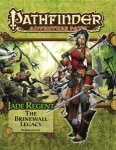 brinewall_300.jpg25.6 KB · Views: 21,469
brinewall_300.jpg25.6 KB · Views: 21,469 -
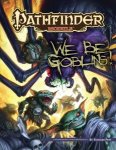 brinewall_WbeGob_300.jpg24.7 KB · Views: 11,988
brinewall_WbeGob_300.jpg24.7 KB · Views: 11,988 -
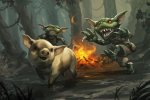 brinewall_SquealyNord_300.jpg22.4 KB · Views: 15,028
brinewall_SquealyNord_300.jpg22.4 KB · Views: 15,028 -
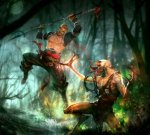 BRINE_1_350.jpg28.8 KB · Views: 13,177
BRINE_1_350.jpg28.8 KB · Views: 13,177 -
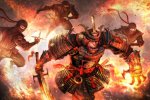 brinewall_2_350.jpg87.8 KB · Views: 13,287
brinewall_2_350.jpg87.8 KB · Views: 13,287 -
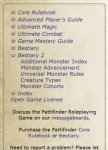 PRD_MENU.jpg26.5 KB · Views: 11,719
PRD_MENU.jpg26.5 KB · Views: 11,719 -
 YouShallNotPass.jpg99.2 KB · Views: 11,523
YouShallNotPass.jpg99.2 KB · Views: 11,523
Last edited by a moderator:









